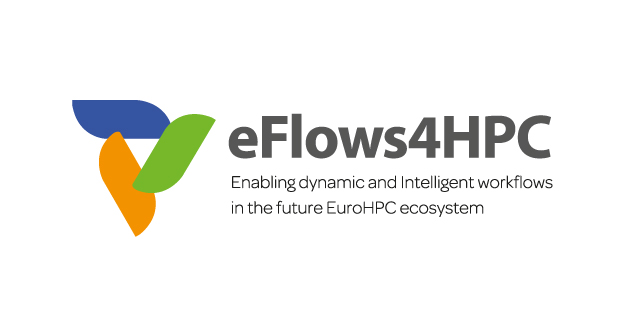Projectes
The Data Infrastructure Capacities for EOSC (DICE) consortium brings together a network of computing and data centres, research infrastructures, and data repositories for the purpose to enable a European storage and data management infrastructure for EOSC, providing generic services and building blocks to store, find, access and process data in aconsistent and persistent...
For Artificial Intelligence (AI) to become fully pervasive it needs resources at the edge of the network. The cloud can provide the processing power needed for big data, but edge computing is located close to where data are produced and is therefore crucial to their timely, flexible, and secure management.
AI-SPRINT will define a framework for...
High-Performance Computing (HPC), used to be promoted mainly by the big science and defence communities. However, with the recent advent of AI and IoT, wider use of HPC is bringing new benefits to areas such as industry, healthcare and the economy. All regions now see intense investments in HPC as an essential in order to compete globally. In this context, coordination and...
IntelComp sets out to build an innovative Cloud Platform that will offer Artificial Intelligence based services to public administrators and policy makers across Europe for data- and evidence-driven policy design and implementation in the field of Science, Technology and Innovation (STI) policy. Large STI datasets are processed on a High Performance Computing (HPC)...
Artificial Intelligence (AI) is already part of our lives and is extensively entering the space sector to offer value-added Earth Observation (EO) products and services. Copernicus data and other georeferenced data sources are often highly heterogeneous, distributed, and semantically fragmented. Large...
Cancer is the second leading cause of death in the EU. More than 150.000 persons within EU-28 die of colorectal cancer (CRC) every year (more than 10% of all cancer-related deaths). For advanced-stage disease, where surgery is not possible, systemic therapy is used. A few decades ago, chemotherapy was the only option, with overall survival around one year. With chemotherapy,...
To support EU countries in assessing their progress for reaching their targets agreed in the Paris Agreement, the European Commission has clearly stated that a way to monitor anthropogenic CO2 emissions is needed. Such a capacity would deliver consistent and reliable information to support policy- and decision-making processes. To maintain Europe’s independence in this domain, it is...
AI is one of the biggest mega-trends towards the 4th industrial revolution. While these technologies promise business sustainability and product/process quality, it seems that the ever-changing market demands and the lack of skilled humans, in combination with the complexity of technologies, raise an urgent need for new suggestions. Suggestions that will be agile, reusable,...
Today developers lack tools that enable the development of complex workflows involving HPC simulation and modelling with data analytics (DA) and machine learning (ML). The eFlows4HPC project aims to deliver a workflow software stack and an additional set of services to enable the integration of HPC simulation and modelling with big data analytics and machinelearning in...
High-fidelity simulations using supercomputers play a key role in aerospace and automotive design for reducing the number of ground and in-flight tests. The mesh lies at the heart of the simulation: it reproduces the geometry using elements that, for engineering applications, are required to be curved (high-order).
This project exploits geometric...







